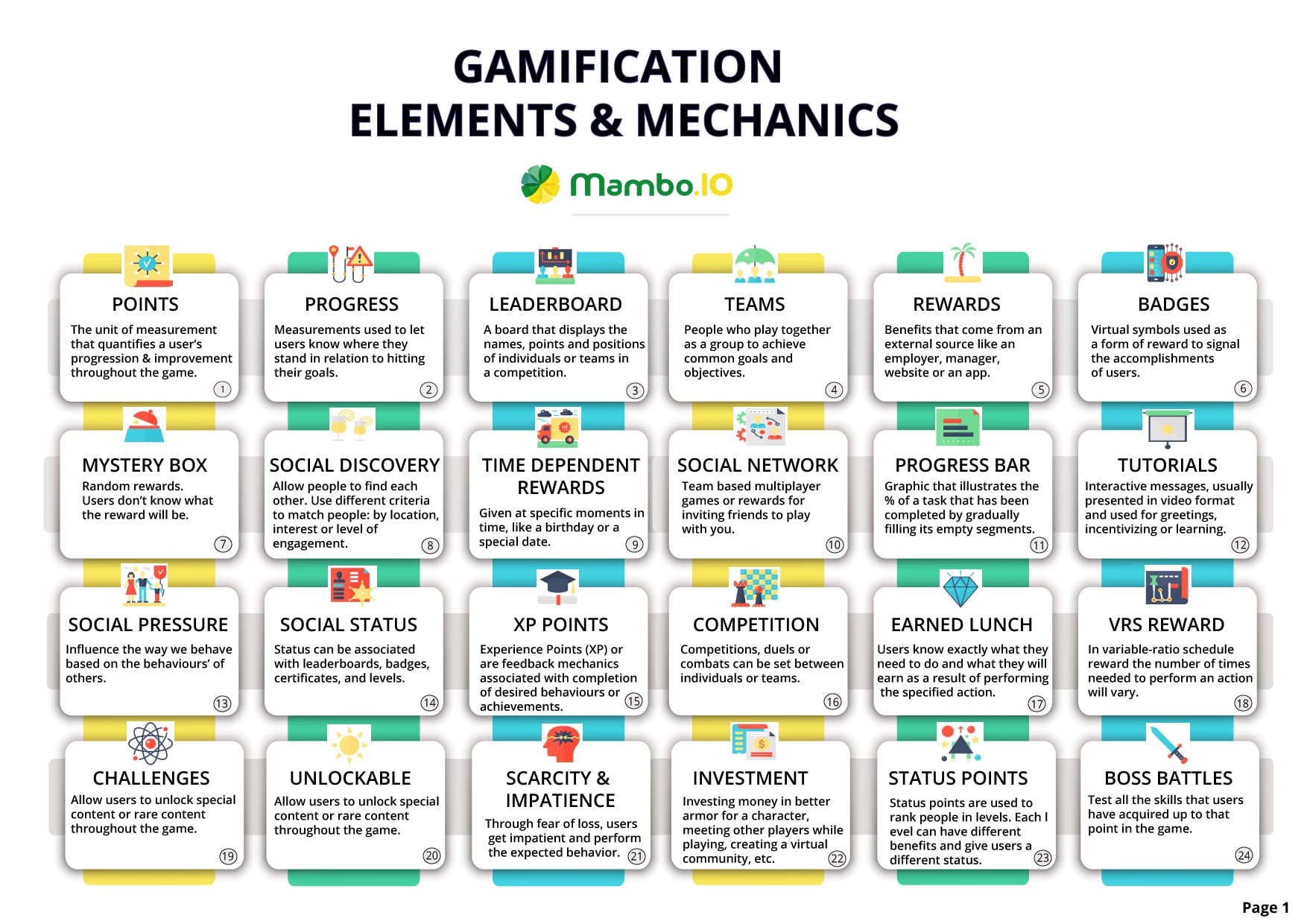Gamification in the Workplace: Key to Engagement & Productivity
Ever heard the timeless adage, “All work and no play makes Jack a dull boy”? This is not limited to childhood; adults can benefit from it too. This principle lies at the heart of gamification in the workplace.
Dive into this comprehensive guide to harness gamification’s power in your workplace. Use this as a handbook to increase employee engagement, kindle motivation, and fuel productivity in your team. Uncover benefits, implement actionable strategies, and stay ahead of future trends. Transform your workspace into a vibrant, interactive hub through effective employee training.
Table of Contents
- Gamification in the workplace: Understanding its impact and benefits
- The psychology of gamification in the workplace and why it works
- Benefits of gamification in the workplace: Empowering employee engagement and motivation
- How to gamify work: Strategies for effective implementation
- Gamification in the workplace: Real-world examples and applications
- The future of gamification in the workplace
- Conclusion
- Machine Learning In Finance: 12 Essential Applications
- How To Create Interactive Compliance Training For Bank Employees
- How Fintech Apps Are Using Gamification To Increase User Engagement
- Top Gamification Companies for Employee & Customer Engagement
Download your free
“Gamification Guide”
Get your PDF now and start transforming your approach to digital engagement!
Gamification in the workplace: Understanding its impact and benefits
Picture this: a world where productivity skyrockets and the competitive edge sharpens. Welcome to the era of gamification. This powerhouse surged from $14.87 billion in 2022 to $18.63 billion in 2023, with eyes set on a cool $46.44 billion by 2027.
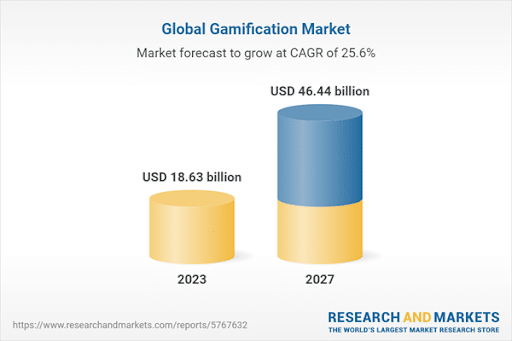
Source: Research and Market
Across start-ups and large organisations alike, savvy product managers understand that gamification in the workplace is more than just a trendy term—it’s a transformative strategy redefining the business world. Disregarding it could hinder growth, while adopting it can provide a dynamic boost towards industry superiority. It is a key tool to boost employee engagement and morale.
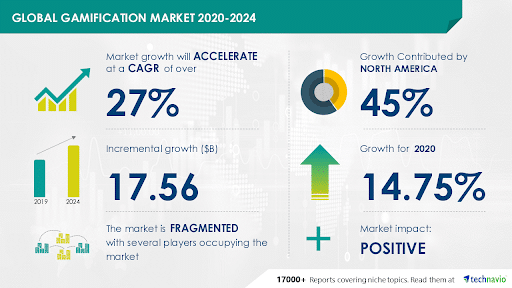
Source: Business Wire
That is, in forward-looking boardrooms, implementing gamification means transcending the status of a transient trend. It has become a crucial benchmark for modern practices, especially during employee onboarding.
The psychology of gamification in the workplace and why it works
Wondering what makes gamification a power-packed tool for boosting performance and inspiring employees to conquer routine tasks? No, it isn’t some complex algorithm; it’s simple psychology.
Gamification taps into the brain’s natural framework, leaning on the fascinating science of the “reward compulsion loop.”
Imagine this: an employee completes a task and receives desirable rewards such as public recognition, sparking a dopamine rush, the neurotransmitter linked to pleasure. Naturally, they’re prompted to redo the job, anticipating that same gratifying feeling.
This is the same thrill you get from your first-morning coffee or playing games like Pokémon or Farmville. By offering task incentives, you’re weaving this reward loop into your workplace culture, thus creating a naturally dopamine-rich setting.

But dopamine isn’t just about feeling good; its multifaceted role in our brains influences aspects like motivation, memory, behaviour, cognition, attention, sleep, and mood. So when you bring gamification into the mix, you’re doing more than making work fun. You’re dynamically elevating your team’s performance, promoting an invigorating and inviting atmosphere that sparks brilliance.
Benefits of gamification in the workplace: Empowering employee engagement and motivation
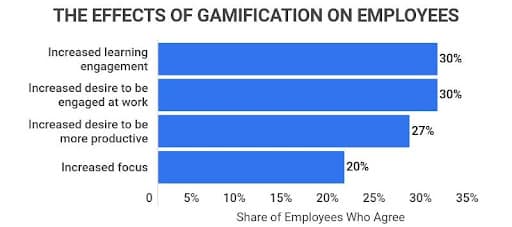
Source: Zippia
Gamification in the workplace is a powerful driver of engagement and productivity. It’s more than just an entertainment tool. Integrating game mechanics into daily tasks ignites a healthy competitive spirit among colleagues that subsequently motivate employees. Employee recognition is also enhanced, making completing tasks feel rewarding.
Studies have shown that employees experience gamification positively, improving overall job performance. When you implement gamification tactics, regular duties turn into exciting challenges. Work is transformed into a game, fostering teamwork and amplifying efficiency. Even seemingly dull tasks become engaging.
Download your free
“108 Gamification Elements and Mechanics”
Get your cheat sheet and have a quick reference at your fingertips!
Enhancing skill development and learning through gamification techniques
Gamification wraps learning in compelling narratives, driving desired behaviours in employees. It stimulates an endorphin release, creating a serene and focused ambience for immersive learning. This playful process has proven to be a great tool in training employees, allowing everyone to learn while they play.
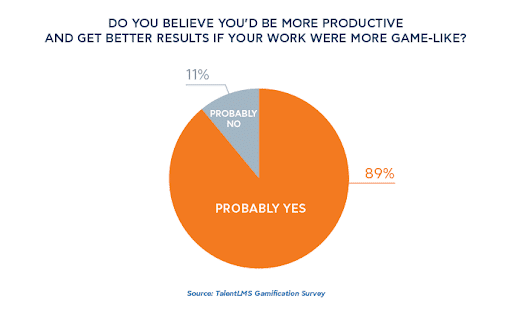
Source: TalentLMS
Here’s how gamification supercharges the workplace:
- Invigorates team performance – Implementing a gamification program breathes life into mundane tasks, turning them into enticing challenges. It fuels a harmonious team spirit and elevates collective performance. A token of recognition can further stoke this team spirit and help reach business goals.
- Offers instant feedback – It turns tasks into measurable targets, providing real-time feedback. Gone are the days of shocking annual performance reviews—now, 57% of employees seeking recognition and 60% wanting instant feedback can have their needs met transparently and promptly.
- Boosts retention rates – A fun-filled workday can increase employee engagement, reducing the likelihood of job abandonment by a staggering 87%.
Simply put, gamification at work makes for a happier team, more transparent feedback, and heightened performance.
Enhancing skill development and learning
At the epicentre of gamification’s effectiveness is the mighty hippocampus, our brain’s memory fortress. Gamification, acting as a spark plug, energises this brain region, enhancing employees’ memory retention prowess. It even triggers a dopamine rush, that crucial neurotransmitter which amplifies learning and attention.
A gamification program wraps learning in compelling narratives by capitalising on our brain’s undeniable bias towards stories over sterile facts. The result? A learning management system that is not only efficient but utterly enjoyable. This playful process stimulates an endorphin release, creating a serene and focused ambience for immersive learning. Therefore, incorporating gamification strategies not only engage employees but also encourage employees to seek more ways to grow in their roles.
Gaming is more than just fun and games. It bolsters neuroplasticity, strengthening our brain’s ability to change and adapt. This in turn fortifies neural pathways, making them more robust. It also turbocharges cognitive skills, enhancing our ability to think and solve problems. Games can spark creativity, encouraging innovative thinking. Finally, gaming can shield against age-related cognitive decline, helping to keep our minds sharp as we get older. Gamification, therefore, is no mere child’s play—it’s a potent tool for transformative learning and skill enhancement.
Boosting productivity and performance
The traditional approach of enforcing strict discipline for increased productivity is fading. In today’s work culture, employee motivation is king, with the workforce desiring deep engagement and camaraderie beyond a simple paycheck.
Gamification has emerged as a powerful motivator, integrating playfulness and competition into daily tasks and dramatically boosting productivity and profitability. In fact, a recent survey revealed that a remarkable 90% of workers benefited from gamification. However, that’s not all. Companies that embraced this innovative strategy saw their profits skyrocket by an astounding seven times.
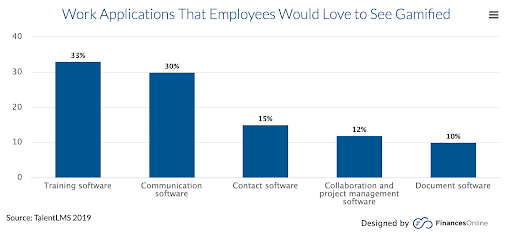
Source: Finances Online
Regular duties become exciting challenges by transforming work into a game. Even mandatory tasks like completing a training course are turned into engaging activities. This method fosters teamwork. It also amplifies efficiency. For instance, a point-based reward system could gamify task tracking.
Further, utilising platforms like ‘im-a-puzzle’ for casual team interactions could enhance bonds and fuel motivation. To put it succinctly, gamification transforms work into a rewarding, fun-filled journey.
How to gamify work: Strategies for effective implementation
Crafting a successful gamification initiative can be a full-time job. But when your team is immersed in their roles, their passion shines, customers feel the love, and your business thrives. The challenge? Finding enjoyable strategies and gamification features that spark their interest.
Let’s explore crafting a successful gamification initiative.
Developing a gamification strategy
Think of goal-setting theory and gamification as the powerful tag-team fuelling motivation. They intertwine seamlessly, enhancing engagement in almost everything. Most gamified platforms cleverly integrate goals – clearly defined or user-determined – acting as the magical ingredient in the mix. These could be as direct as quests or subtly presented as coveted achievements.
Delving into scholarly texts unveils numerous gamification features driving goal-setting, from badges to leaderboards. A recent study introduces new elements like boss battles and certificates, expanding the existing goal-setting landscape akin to venturing into an unexplored domain.
A delicate aspect of gamified systems is balancing goal difficulty. It’s reminiscent of culinary arts, where the challenge level is the spice, adjusted according to the user’s skill or palate. The approach progressively raises the stakes as users improve, a strategy borrowed from flow theory. This harmony between challenge and skill wards off boredom and anxiety, perfectly embodying a goal-setting approach.
Designing engaging gamification experiences
Designing engaging gamification experiences requires a clear understanding of your audience and the right balance of challenges and rewards.
- Identify the problem you’re tackling – Is it boosting employee performance? Is it crafting better marketing campaigns? Is the goal to increase app user loyalty? Are you trying to improve website conversions? Is the aim to develop better employee training modules? Or, is it to raise employee productivity? A defined problem statement is your compass before implementing gamification strategies.
- Clarify your objectives – How do you picture success, and how can we put a number to it? Maybe success looks like bumping up course completion rates by 20%, or perhaps it’s about boosting user interactions by 15%. Frame your goals with the SMART principle: specific, measurable, achievable, relevant, and time-bound.
- Dive deep into your audience’s mindset. – First, dive into their interests. Next, explore their skill sets. Then, shift your focus to their attitudes. Afterwards, set your sights on their aspirations. Now, armed with this valuable knowledge, it’s time to create a vibrant user profile. This isn’t just any profile. This is a mirror reflecting your typical user, their unique characteristics, and their pressing needs.
- Map out the user journey. – Illustrate your users’ path from registration to feedback, providing a comprehensive view of user interactions.
- Craft game dynamics. – Select rules, challenges, feedback systems, and rewards to engage and direct users. Infuse game elements like points, badges, levels, quizzes, narratives, or social media integration. Summarise these mechanisms in a game design document.
- Measure and modify accordingly. – Evaluate your project’s effectiveness and fine-tune it using data and user feedback. Utilise surveys, interviews, analytics, A/B, and user testing to fine-tune your gamification project. Develop a detailed testing plan to ensure an in-depth evaluation.
Evaluating and implementing the right gamification platform for your business needs
Embracing gamification in your enterprise demands careful vendor selection. Evaluating and implementing the right gamification platform for your business needs careful consideration.
The aim should be to align the chosen platform with the goals of your organisation. A well-implemented gamification strategy can boost engagement and motivate employees to strive for higher performance.
Here are a few key elements to consider before starting your search.
- Understand your industry. – Knowing your industry helps you select a vendor whose past work aligns with your business. This familiarity could be the difference-maker in ensuring your gamification strategy succeeds.
- Consider your budget. – Choosing a pricing model is crucial. Several models exist, from licensing to usage-based deliverables, revenue sharing, or hourly/flat rates. Even though more prominent vendors offer experience and robust budgets, a smaller one may provide a more personalised gameplay design.
- Clarify your goals. – Identify what you hope to achieve with the gamification platform. Is it employee motivation, training, or a customer loyalty program? Clear, specific goals facilitate effective gamification execution.
- Identify required features. – Determine necessary features like an analytics dashboard, API, or CRM system integration. These requirements guide your search for a suitable gamification company.
- Narrow down your options. – After researching, comparing, and evaluating various platforms and vendors, it’s time to decide. You can use a scoring system or decision matrix based on predefined criteria, seek feedback from other customers, or conduct preliminary testing. Once satisfied, you can finalise the contract with your chosen vendor.
Navigating the world of gamification solutions might feel overwhelming, but with Mambo, it’s a breeze. Mambo is dedicated to providing businesses with practical, top-tier gamification tools to effectively stimulate and motivate teams.
The central goal at Mambo is to address the fundamental obstacle impacting their clients’ growth aspirations—the degree of workforce engagement. With Mambo’s services, boosting engagement is an attainable goal, not a far-off aspiration.
Overcoming challenges and maximising success
To maximise the effectiveness of gamification in the workplace, it’s crucial to dodge common pitfalls.
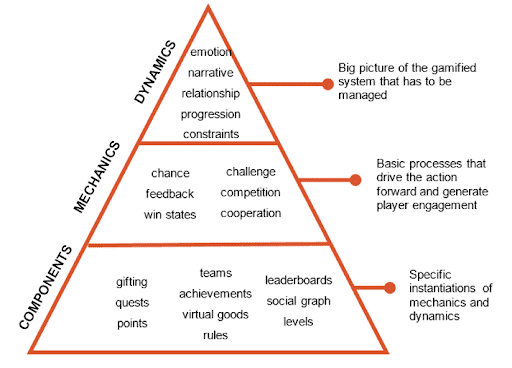
Source: Chuah Kee Man (Medium)
- Ambiguity – For gamification to truly take off, blend it seamlessly with your training regimen. Crystalise your goals and determine the behaviours your game should foster.
Pro tip: Align your game’s purpose with broader training objectives and chart a roadmap to success.
- Erroneous focus – Balance is vital between rewards and learning. Don’t let prizes overshadow the learning goals.
Pro tip: Employ badges and rewards to bolster task mastery, avoiding non-value-adding behaviours.
- Misguided rewards – Ensure the game doesn’t inadvertently incentivise wrong behaviours.
Pro tip: Explain the path to rewards, underlining their link to training objectives.
- Overcomplication – Keep game rules simple. More complex game mechanics may dishearten learners and block desired outcomes.
Pro tip: Rules should be straightforward; the true challenge lies in learning.
- Excessive competition – While gamification’s social aspect can foster collaboration, overdone competition can backfire.
Pro tip: Implement measures like daily time limits to thwart system exploitation.
As you navigate common pitfalls and devise strategies for success, it’s crucial to align with a trusted partner that can guide this transformative journey. Mambo.io integrates gamification with learning to craft captivating experiences that escalate training results. With a keen understanding of your company’s unique needs, Mambo customises its gamification solutions, ensuring a perfect fit.
Gamification in the workplace: Real-world examples and applications
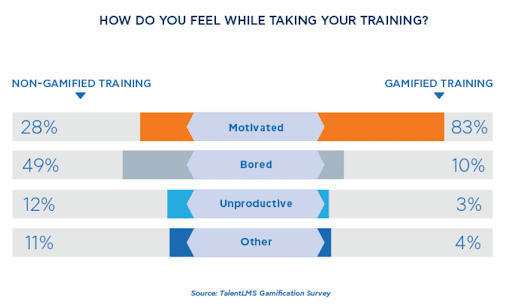
Source: TalentLMS
Gamification is not mere child’s play but a potent business catalyst. It hooks employees with evolving challenges, transforming workplaces into interactive arenas. Remarkably, the gamified approach increased staff motivation by 83% and boosted engagement by 60%. It’s an untapped avenue for businesses seeking expanded influence.
Gamification in employee training and development
Gamification has been recognised as a game-changer in professional development since the ’90s. With the advent of the digital age, its potential has truly been unlocked.
With this approach, the once monotonous onboarding process receives a spark of vitality. No longer dreary, it evolves into an exhilarating journey for new hires. These fresh faces dive headfirst into a vibrant, dynamic learning space. As a side effect, a wave of revitalisation washes over employee morale. Fun finds its way into the process, turning duties into delights. The end result? A marked enhancement in engagement and a noticeable uptick in knowledge retention. It further revolutionises mandatory training on safety, compliance, and legal issues, making it more captivating and memorable.
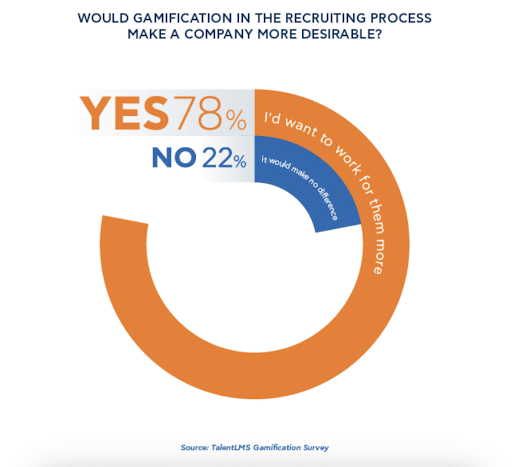
Source: TalentLMS
Examples of successful implementation include Cisco’s ‘Aspire,’ a game-like social media training platform, and HP’s gamified sales training program. These initiatives elevated skill-specific learning, rewarded achievement, and skyrocketed training completion rates.
Enterprise gamification and employee engagement
Cost-effective, widely recognised technology is now a central aspect of training platforms, as they increasingly turn towards gamification. A trend that’s gaining traction involves prominent technology companies partnering with gamification specialists like Mambo. This strategic alliance aims to inject a playful, game-like element into their contact centre service training. It’s a creative way to make learning more engaging and effective. This innovative approach transformed training into a vibrant, dynamic journey where employees accumulated points, earned badges, and met individual targets within a microlearning environment.
The results were impressive. There was a noticeable drop in absenteeism, as much as 12%. Meanwhile, call handling per shift saw a rise, boosting by 10%. What was most remarkable, however, was the agent feedback. An incredible 78% of them felt a surge of invigoration. They also expressed a renewed sense of readiness to excel in their roles. This success story illustrates the potent blend of work and plays, demonstrating that enjoyable training can lead to outstanding business outcomes.
Employee engagement games: Motivating employees through gamification
Think of your office as a dynamic racetrack, and each accomplished task symbolises another lap won, another competitor outpaced. This is gamification at work.
Let’s unpack the gamification strategy and see how it can boost motivation:
- Leaderboards – Innovative scoreboards are sparking a healthy sense of competition among employees. They’re not static – instead, they’re updated on a regular basis. This constant refresh helps to spotlight emerging talents. It also gives due recognition to the star employee of the moment. With this system in place, successful individuals are always motivated to strive for even greater achievements.
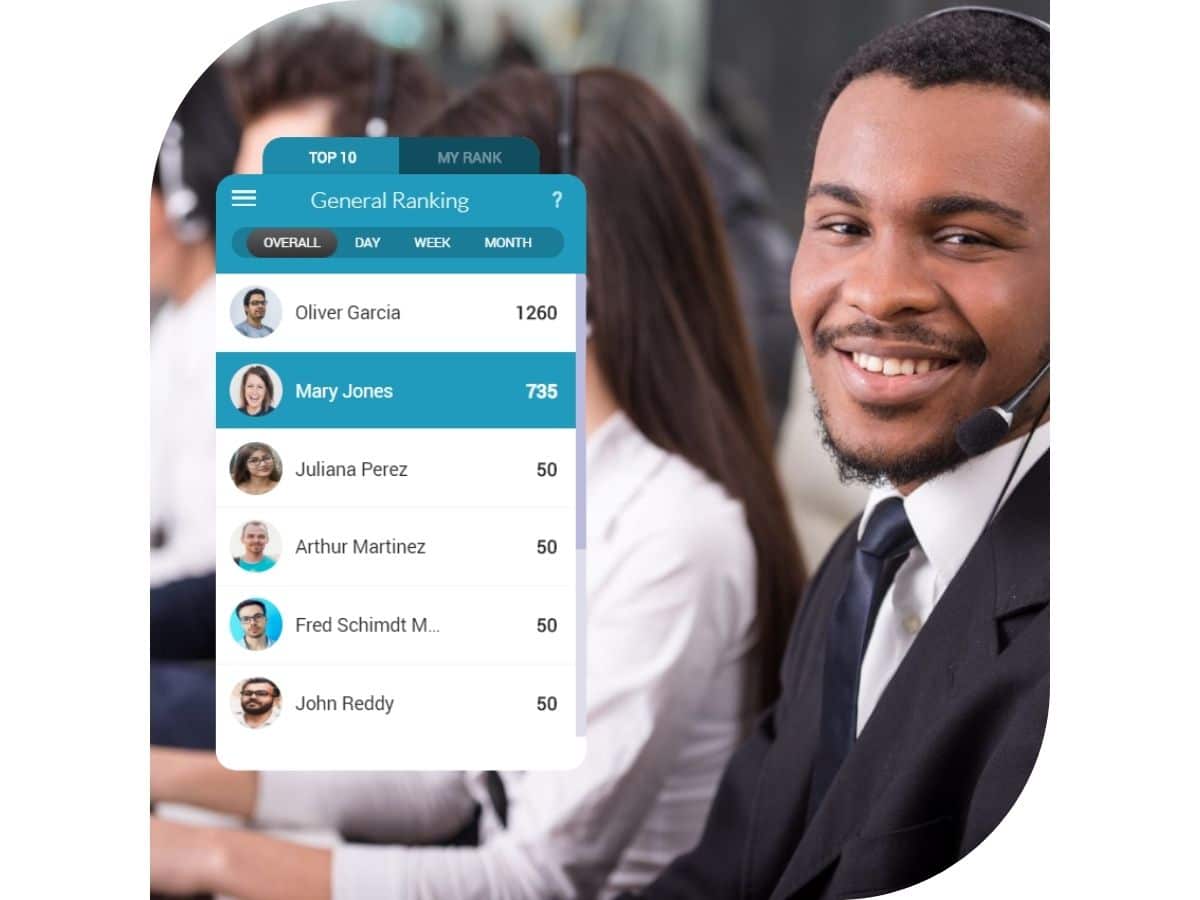
- Levels – Every new level represents a unique challenge and an opportunity for growth, like advancing through stages in a video game, thereby maintaining a consistently engaging work environment.
- Badges – These are virtual accolades, a testament to employees’ achievements that they can wear with pride within the workplace.
- Points – Consider these as a workplace currency, accumulating with each achievement. Having the most points can lead to bragging rights. Not just that, these points are also tickets to exciting rewards. The thrill they add to otherwise regular tasks is undeniable.
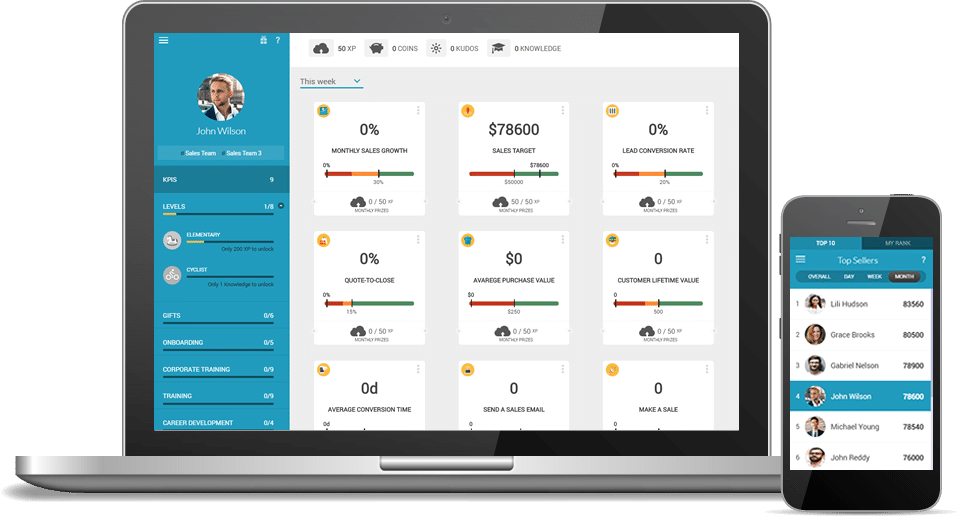
Take, for example, IBM’s success story. Upon implementing a digital badge program, they witnessed a dramatic surge in results – course completion rates skyrocketed by 226%, and pass rates increased significantly. In essence, the entire workforce emerged victorious.
The future of gamification in the workplace
Gamification is radically reshaping the operational landscape within a multitude of organisations. It propels advantageous actions by infusing working processes with elements of game design. There’s a seismic shift happening. It’s spurred by the ever-changing demands of people and businesses alike. As a result, we see a stark departure from conventional protocols. This opens up an exciting path that paves the way for the future.
Emerging gamification in the workplace trends and advancements
The world is on the precipice of a gamification revolution, with global market projections expected to skyrocket from $9.1 billion in 2020 to a staggering $30.7 billion by 2025, marking a 27.4% compound annual growth rate.
The emerging trend of using gamification to solve the modern employee engagement problem has seen tremendous success. Research shows a 48% surge in workplace engagement and a 90% boost in productivity when gamified techniques are employed.
FreshWorks, a cloud-based help desk platform, provides a perfect case in point, with its revenue soaring by an extraordinary 1,000% following the introduction of gamified strategies.
One essential advancement driving gamification is data analytics. Real-time actionable data, a byproduct of gamified systems, facilitates continuous performance tracking and immediate improvements to training programs. Moreover, it gives marketers invaluable insights into customer behaviour, fostering innovation.
The workforce landscape is also changing. By 2025, millennials will make up 75% of the global population. This tech-savvy generation, brought up on a diet of computers and video games, is particularly receptive to gamification. For instance, Microsoft multiplied its user feedback by 16 times by successfully integrating gamified strategies into its operations.
Meanwhile, the advent of immersive technologies, like AR, VR, and MR, represents the next frontier in gamification in the workplace. An estimated 5.22 billion unique mobile users worldwide are facilitating this trend. This technological evolution has spurred industries like Exxon Mobil and global retail giant Walmart to adopt immersive, gamified technologies, effectively revolutionising their operations.
Conclusion
We are swiftly moving into a more digital era. Gamification in the workplace is rising as an innovative strategy. It provides companies with a fun, effective way to engage their employees. It keeps them motivated and engaged. In turn, this promotes their growth and development.
Are you a startup looking to fire up your workforce? Or perhaps you’re an established corporation needing to re-energise your team? Things have changed. Work isn’t what it used to be. Now, gamification leads the way. It’s the new name of the game.
Mambo, as a trusted gamification platform, has the tools and expertise you need to lead this transformative journey. With a client-centric approach, Mambo strives to deliver the most effective gamification solutions, helping businesses improve engagement, productivity, and overall performance.
Embrace gamification today, and let the games begin. Why wait? Request a demo with Mambo now!
Latest Posts
Machine Learning In Finance: 12 Essential Applications
The impact of machine learning on finance is significant. Thanks to this technology, financial institutions are now equipped to make efficient decisions. Through the analysis of data sets, machine learning […]
How To Create Interactive Compliance Training For Bank Employees
Banking compliance training isn’t just another task. It’s the stage where everything else performs. Banks must navigate a myriad of regulations and laws. After all, this is a trust-driven, high-stakes […]
How Fintech Apps Are Using Gamification To Increase User Engagement
Discover how gamification in fintech is revolutionizing financial engagement, making banking fun & boosting user loyalty.


